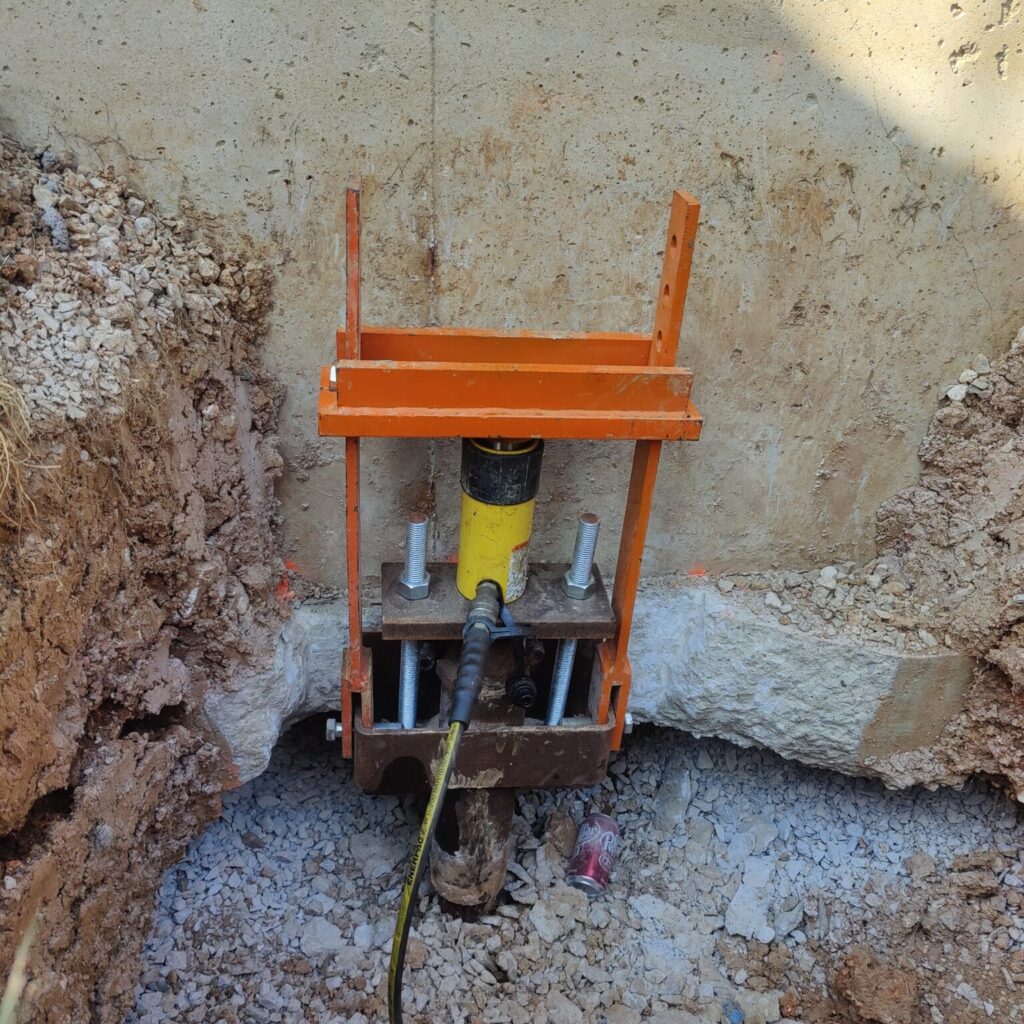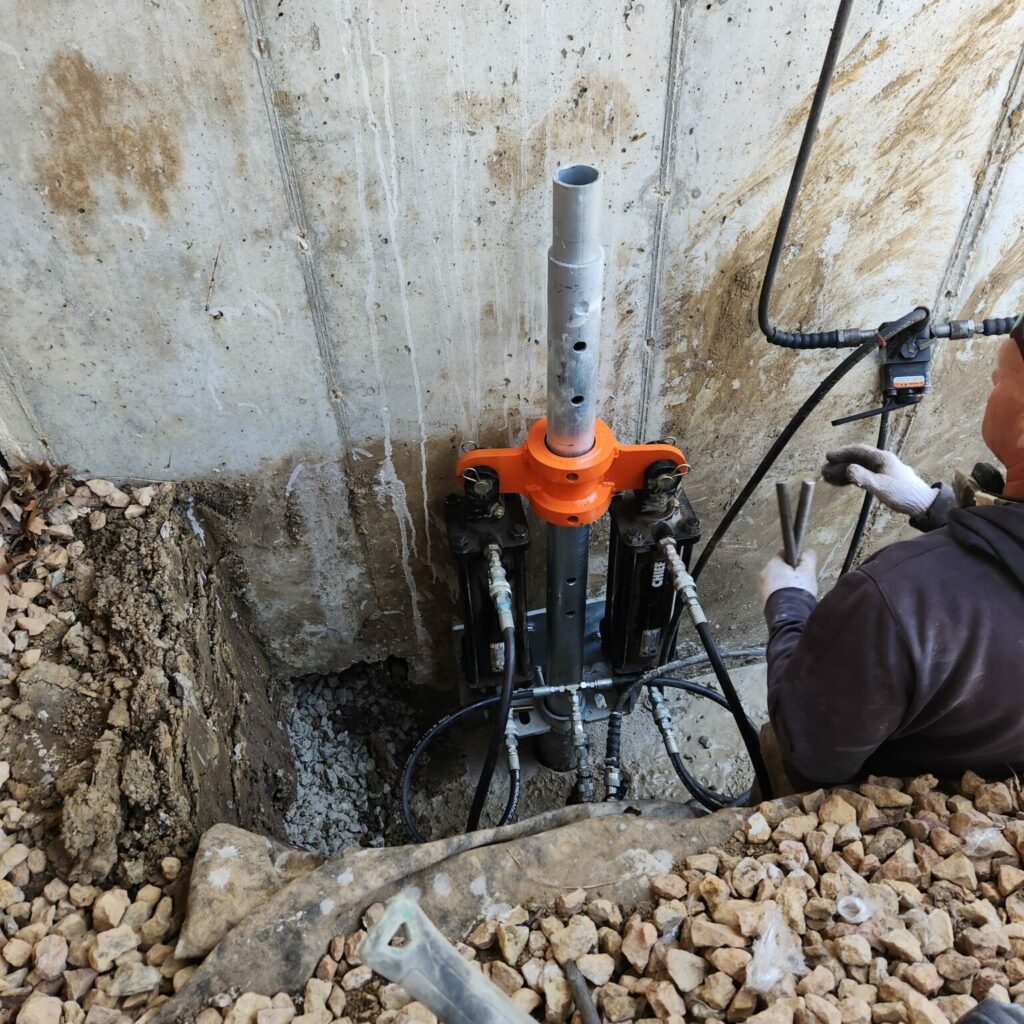Resistance Piles
Hydraulically driven steel piers or resistance piles, also known as “push piers”, are the most common solution to repair structures experiencing settlement problems. MHS resistance piles are manufactured using API J55 steel pipe with a coupler welded inside of the pipe, in order to connect the next section by sliding it onto the coupler. MHS offers section lengths of 5 feet and 7 feet. By using longer sections, the number of couplings in the pile is reduced, making it a more rigid inclusion. The 2.87” OD, .217 wall can be driven to an ultimate capacity of 80,000 lbs., and the 3,5” OD, .254 wall piles can be driven to an ultimate capacity of 100,000 lbs.



How Resistance Piles Are Installed
The piles are driven into the soil using the weight of the structure. Typically, piles are spaced on 6’-8’ centers depending on the loads required, integrity of the foundation, construction of the structure, as well as other considerations. Piles are driven individually and can use the weight of the building that extends 8 feet to 10 feet on each side of the pile, to achieve an ultimate capacity that is greater than the service load the pile is supporting.
How MHS Resistance Piles Work
MHS implements a two-cylinder system, with a slip head in the center of the cylinders. This allows the system to be used with a skid steer or mini-excavator, which contractors typically have on site, saving the cost of an expensive hydraulic pump. The foundation is prepared, and the foundation bracket installed. Hydraulic cylinders are attached to the bracket, and a slip head is placed in between the cylinders and pinned to the cylinders. A lead section with the antifriction ring is the first section to be driven. The foundation bracket has a guide sleeve which is typically 4 feet in length, that is driven into the soil with the lead section. The guide sleeve helps reduce the eccentric moment placed on the pile. Sections are driven into the soil with the slip head and a two-bolt system, similar to torquing a helical pile into the soil. The extension lengths are 5 feet or 7 feet, depending on head room and other factors. Feeding the extension from the top allows for longer segments and continuous driving which reduces installation time. Using a high-flow machine will also speed up the installation process.
Why Resistance Piles Are The Right Choice
Hydraulically driven piles can obtain capacity by friction or bearing on rock. Resistance piles are driven to a competent bearing stratum, and the driving force is monitored to ensure the pile will support the design loads. Once the pile is driven, it can be loaded with the weight of the structure, and if required, lift the structure. Most “lifts” recover 50% to 90% of the lost elevation.
Contact MHS to answer any questions or assist you with the design on your next foundation repair project.
